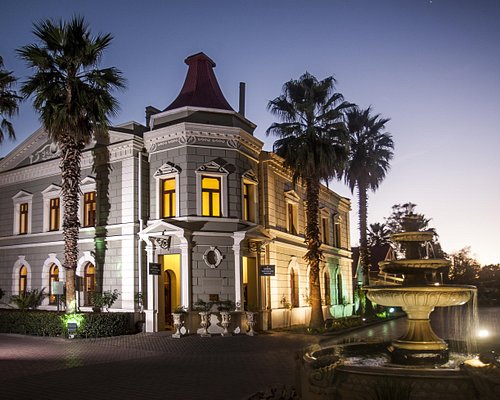More About Johannesburg North Attractions
Table of ContentsJohannesburg North Attractions - QuestionsJohannesburg North Attractions - The FactsJohannesburg North Attractions for DummiesThings about Johannesburg North AttractionsA Biased View of Johannesburg North AttractionsThe Greatest Guide To Johannesburg North Attractions
The city grew on the edge of the Witwatersrand Main Reef, a subterranean stratum of gold-bearing quartz-silica corporation that arcs for hundreds of miles underneath the Highveld - Johannesburg North attractions. Many of the gold mines in the city discontinued procedure in the 1970s, but in its day the Witwatersrand gold industry accounted for even more than 40 percent of the globe's annual gold production.Johannesburg has a pleasant environment. Summer temperatures average concerning 75 F (24 C); winter temperatures average regarding 55 F (13 C) and only sometimes dip listed below freezing. The city appreciates concerning 8 hours of sunshine each day in both wintertime and summertime. Rainfall averages about 28 inches (700 millimetres) per annum, but the total differs significantly from year to year.
What rain the city receives drops nearly solely in the summertime months, commonly in magnificent late-afternoon electric tornados. Air contamination postures a considerable problem, specifically in the cold weather, when thermal inversions restrain the westward circulation of air from the Indian Ocean. Air pollution is most extreme in the densely settled Black townships on the city's perimeter, where many homeowners still rely upon coal for gas.

The Ultimate Guide To Johannesburg North Attractions
The equilibrium of the city is occupied by whites. Accommodation varies in character and quality.
Physical growth, although rather limited by transport, continued promptly as immigration to South Africa, and Johannesburg in particular, increased dramatically.
A lot of bad residential areas were combined, with inadequate blacks and whites living with each other, although the wealthy suburban areas were normally scheduled for whites.
The previous system of eleven numbered regions was reorganised in 2006. Marshalltown, as seen from the top of the Carlton Centre. The M1 and M2 run behind the buildings, and the southerly suburban areas expand past the freeway border. The central city of Johannesburg is situated within the city's Area F. The approximated population of the region is 200,000, [] The number of people living in the inner city on an informal basis is unidentified, as many are illegal immigrants. Most higher-income residents and white people have relocated to the northern suburban areas and have been changed by lower-income black individuals. The joblessness, education and learning, and age profiles of the area are all unidentified, as a result of the difficulty of getting reputable info about the area.
A Biased View of Johannesburg North Attractions
Centred on the CBD, the area consists of the suburbs of Yeoville, Bellevue, Troyeville, Jeppestown, and Berea to the east. To the west like it it spreads out to Pageview (Johannesburg North attractions) and Fordsburg. There are small commercial areas to the south, such as City West-Denver and Benrose. Around 800,000 travelers go through the internal city daily, and it operates as a regional buying node for site visitors from the southerly suburbs. Yeoville and Bellevue have a mix of apartment and solitary domestic systems on tiny lots. The area is located on a hilly divide that ranges from east to west. The most noticeable geographical attribute is Observatory Ridge, which useful reference is named for the big observatory situated on it. The entertainment spaces are no longer utilized, due to security troubles.

Johannesburg Stadium, a training ground for both the Golden Lions and Orlando Pirates, is surrounding. The eastern residential areas of Johannesburg lie in the city's 7th [] and 9th [] regions. The area is additionally functionally incorporated with East Rand border communities beyond the official limit of Johannesburg, such as Bedfordview and Edenvale additional info (both part of Ekurhuleni Metropolitan Municipality).
What Does Johannesburg North Attractions Mean?
R. Tambo International Airport Terminal). The eastern suburban areas are several of the oldest areas of Johannesburg, there are big areas of Jewish and other European histories, most of the population is English speaking. There are 3 fairway as well as a number of safeguarded ridges with viewsites. There are several strong and up-market entertainment and buying locations in the east such as the Eastgate Shopping Center and the Greenstone purchasing centre.
Originally built to house male migrant workers, several have actually been enhanced as dwellings for couples and families. The suburb was not traditionally permitted to produce employment centres within the location, so practically all of its residents are travelers to other components of the city.
Everything about Johannesburg North Attractions
The property locations in the north residential areas are mostly formal, with no substantial locations of casual housing, or housing that does not have a long-term structure. This is a well established location, there is a pattern of land usage adjustment from property to business, especially along main arterial roads and around recognized nodes.
The location is well linked to roadway networks, particularly along the north-south axis developed by the M1 and N1. Roads to the east and west are less well created, as there are no highways travelling in that direction. Towards the north boundary of the city, the density of advancement lowers, leaving big areas of primitive land around Midrand.
Fascination About Johannesburg North Attractions
, which is located on a hillside ignoring the internal city and Hillbrow.
Comments on “Not known Factual Statements About Johannesburg North Attractions”